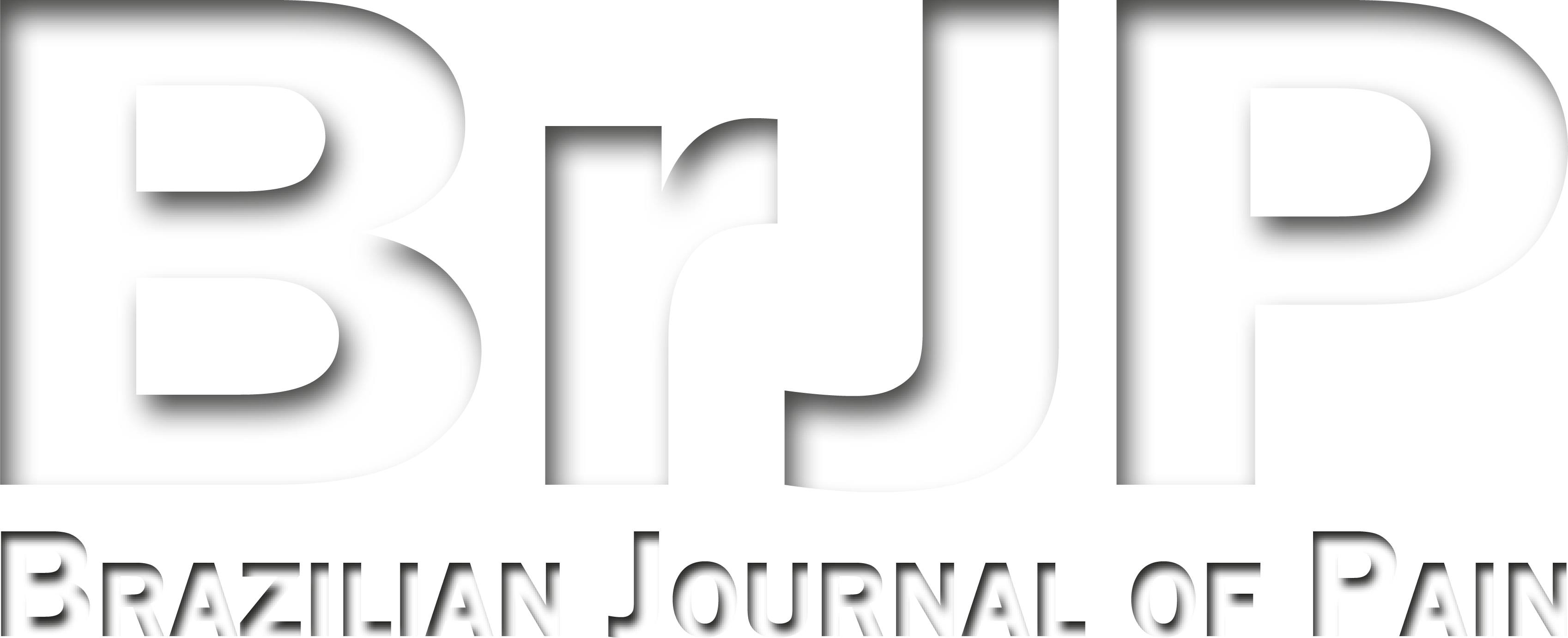Prevalence of temporomandibular dysfunction in athletes: integrative review
Prevalência da disfunção temporomandibular em atletas: revisão integrativa
Bruna Prade Medeiros; Eduardo Grossmann; Caren Serra Bavaresco
Abstract
Keywords
Resumo
Palavras-chave
References
Reinhel AF, Scherma AP, Peralta FS, Palma ICR. Saúde bucal e performance física de atletas. ClipeOdonto. 2015;7(1):45-56.
Schiffman E, Ohrbach R, Truelove E, Look J, Anderson G, Goulet JP. Diagnostic Criteria for Temporomandibular Disorders (DC/TMD) for Clinical and Research Applications recommendations of the International RDC/TMD Consortium Network* and Orofacial Pain Special Interest Group. J Oral Facial Pain Headache. 2014;28(1):6-27.
Leeuw R. Diagnosis and Management. 2018.
Wieckiewicz M, Boening K, Wiland P, Shiau YY, Paradowska-Stolarz A. Reported concepts for the treatment modalities and pain management of temporomandibular disorders. J Headache Pain. 2015;16:106.
Nilsson IM, List T, Drangsholt M. Prevalence of temporomandibular pain and subsequent dental treatment in Swedish adolescents. J Orofac Pain. 2005;19(2):144-50.
Macfarlane TV, Glenny AM, Worthington HV. Systematic review of population-based epidemiological studies of oro-facial pain. J Dent. 2001;29(7):451-67.
Dantas AMX, SantoS JL, Vilela RM, Lucena LBS. Perfil epidemiológico de pacientes atendidos em um Serviço de Controle da Dor Orofacial. Rev Odontol UNESP. 2015;44(6):313-9.
Sailors ME. Evaluation of sports-related temporomandibular dysfunctions. J Athletic Training. 1996;31(4):346-50.
Moon HJ, Lee YK. The relationship between dental occlusion/temporomandibular joint status and general body health part 1. Dental occlusion and TMJ status exert an influence on general body health. J Altern Complement Med. 2011;17(11):995-1000.
Spinas E, Aresu M, Giannetti L. Use of mouth guard in basketball observational study of a group of teenagers with and without motivational reinforcement. Eur J Paediatr Dent. 2014;15(4):392-6.
Duplat YS, Achilles MN. Prevalência de sinais e sintomas para disfunção temporomandibular em lutadores de boxe. Rev Pesqui Fisioter. 2018;8(2):191-8.
Gallagher J, Ashley P, Petrie A, Needleman I. Oral health and performance impacts in elite and professional athletes. Community Dent Oral Epidemiol. 2018;46(6):563-8.
Santos RCO, Padovan Neto JB, Pinto SS, Cyrillo FN. Comparação da atividade eletromiográfica dos músculos masseter direito e esquerdo em atletas de softbol durante gesto esportivo de rebatida. Rev Bras Ciênc Mov. 2009;17(2):1-20.
de Abreu DG, Mota R, Serqueira CM, Lisboa G, Gomes ALM. A possível queda de performance aeróbica em atletas de futebol de 14 a 15 anos, causada pela respiração bucal. Fitness & Performance. 2006;5(5):282-9.
Yousef MK, Ibrahim M, Assiri A, Hakeem A. The prevalence of oro-facial barotrauma among scuba divers. Diving Hyperb Med. 2015;45(3):181-3.
Hobson RS. Temporomandibular dysfunction syndrome associated with scuba diving mouthpieces. Br J Sp Med. 1991;25(1):49-51.
Persson LG, Kiliaridis S. Dental injuries, temporomandibular disorders, and caries in wrestlers. Scand J Dent Res. 1994;102(6):367-71.
Aldridge RD, Fenlon MR. Prevalence of temporomandibular dysfunction in a group of scuba divers. Br J Sports Med. 2004;38(1):69-73.
Jagger RG, Shah CS, Weerapperuma ID, Jagger DC. The prevalence of orofacial pain and tooth fracture (Odontocrexis) associated with SCUBA diving. Prim Dent Care. 2009;16(2):75-8.
Weiler RME, Vitalle MSS, Mori M, Kulik MA. Prevalence of signs and symptoms of temporomandibular dysfunction in male adolescent athletes and non-athletes. Int J Pediatr Otorhinolaryngol. 2010;74(8):896-900.
Weiler RM, Santos FM, Kulic MA, De Souza MPC, Pardini SR, Mori M. Prevalence of signs and symptoms of temporomandibular dysfunction in female adolescent athletes and non-athletes. Int J Pediatr Otorhinolaryngol. 2013;77(4):519-24.
Mendoza-Puente M, Oliva-Pascual-Vaca A, Rodriguez-Blanco C, Heredia-Rizo AM, Torres-Lagares D, Ordonez FJ. Risk of headache, temporomandibular dysfunction and local sensitization in male professional boxers a case-control study. Arch Phys Med Rehabil. 2014;95(10):1977-83.
Lobbezoo L, van Aj W, Klingler MC, Vicente R, van Dijk CJ, Eijkman AJ. Predictors for the development of temporomandibular disorders in scuba divers. J Oral Rehabil. 2014;41(8):573-80.
Bonotto D, Namba EL, Veiga DM, Wandembruck FM, Mussi F, Cunali PF. Professional karate-do and mixed martial arts fighters present with a high prevalence of temporomandibular disorders. Dental Traumatol. 2015;32(4):281-5.
Bonotto D, Penteado CA, Namba EL, Cunali PA, Rached RN, Azevedo-Alanis LR. Prevalence of temporomandibular disorders in rugby players. Gen Dent. 2019;67(4):72-4.
Young EJ, Macias CR, Stephens L. Common dental injury management in athletes. Sports Health. 2015;7(3):250-5.
Buggapati L, Ravi Kumar PV. Athletes awareness on importance of oral health during sports performance. Int J Phys Educ Sports Health. 2017;4(6):75-81.
Matzkin E, Curry EJ, Whitlock K. Female athlete triad past, present, and future. J Am Acad Orthop Surg. 2015;23(7):424-32.
Blanco-Hungría A, Rodríguez-Torronteras A, Blanco-Aguilera A, Biedma Velázquez L, Serrano-del-Rosal R, Segura-Saint-Gerons R. Influence of sociodemographic factors upon pain intensity in patients with temporomandibular joint disorders seen in the primary care setting. Med Oral Patol Oral Cir Bucal. 2012;17(6):e1034-e41.
Livingstone DM, Lange B. Rhinologic and oral-maxillofacial complications from scuba diving a systematic review with recommendations. Diving Hyperb Med. 2018;48(2):79-83.
Furquim BDA, Flamengui LMSP, Conti PCR. TMD and chronic pain a current view. Dental Press J Orthod. 2015;20(1):127-33.
Murakami S, Maeda Y, Ghanem A, Uchiyama Y, Kreiborg S. Influence of mouthguard on temporomandibular joint. Scand J Med Sci Sports. 2008;18(5):591-5.
Submitted date:
06/02/2020
Accepted date:
01/07/2021


